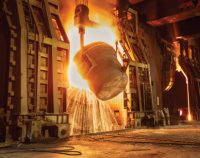Fundamentals of Gas Turbine Engines: 5 PDH
$30.00
Concepts for machines that harness power from heated air or water have been around since the 1600s. From this beginning, the gas turbine engine now is at the center of major industries including: aviation, naval propulsion, and power generation. This course provides an overview of the development of gas turbines, operational theory, Brayton cycle, conditions and design limitations that affect performance, types of turbine engines and components utilized in a gas turbine engine.
SPECIFIC KNOWLEDGE OR SKILL OBTAINED
This course teaches the following specific knowledge and skills:
- History of development of the gas turbine
- Basic gas turbine engine operation theory, Brayton Cycle
- Factor affecting engine performance
- Types of gas turbine engines
- Components of a gas turbine engine
- Gas turbine engine auxiliary systems
CERTIFICATE OF COMPLETION
You will be able to immediately print a certificate of completion after passing a 25 question multiple-choice quiz. The quiz can be retaken unlimited times until a passing grade of 70% or better is earned. This course satisfies 5 professional development hours (PDH) of continuing education.
Related Courses
Improving Process Heating System Performance: 4 PDH
$24.00 Add to cartThis course provides a thorough overview of process heating systems and their components and practical guidelines to enhance performance and increase efficiency. Instructor: Seth Grablow, PESPECIFIC KNOWLEDGE OR SKILL OBTAINED
This course teaches the following specific knowledge and skills:
- Understand process heating systems and applications
- Discuss process heating system components and principles
- Explain process heating assessments and common system problems
- Discuss performance enhancements at the system level
- Discuss performance enhancements at the component level
- Understand the economics of improving process heating
CERTIFICATE OF COMPLETION
You will be able to immediately print a certificate of completion after passing a twenty (20) question multiple-choice quiz. The quiz can be retaken unlimited times until a passing grade of 70% or better is earned. This course satisfies four (4) professional development hours (PDH) of continuing education.
Preview CourseClick “Preview Course” to View Prior to PurchaseClick “Add to Cart” to Purchase and Access QuizImproving Fan System Performance: 4 PDH
$24.00 Add to cartIn this online course a student will understand fan systems, their components and operation, and various methods and guidelines to improve the performance for new or existing systems.Instructor: Seth Grablow, PESPECIFIC KNOWLEDGE OR SKILL OBTAINED
This course teaches the following specific knowledge and skills:
- Understand the basics industrial fan systems and components
- Identify fan selection and efficiency
- Discuss basic maintenance and common problems
- Explain configurations to improve fan efficiency
- Understand fan control and arrangements
- Explain fan economics and calculations used
CERTIFICATE OF COMPLETION
You will be able to immediately print a certificate of completion after passing a twenty (20) question multiple-choice quiz. The quiz can be retaken unlimited times until a passing grade of 70% or better is earned. This course satisfies four (4) continuing education hours (CEH)/professional development hours (PDH) of continuing education.
Preview CourseClick” Preview Course” to View Prior to PurchaseClick “Add to Cart” to Purchase and Access Quiz




